Recruiting in College Football 26 Dynasty has now become quite a strategic process. With the addition of more dynamic systems like the transfer portal and revamped scouting mechanics, building a successful program now depends heavily on how well you manage your recruiting efforts.
Whether you’re leading a powerhouse or trying to build up a smaller school, understanding every layer of the recruiting system is essential. Keeping that in mind, this article will provide a complete guide on how to recruit in College Football 26 Dynasty.
Choosing your Head Coach and their Backstory
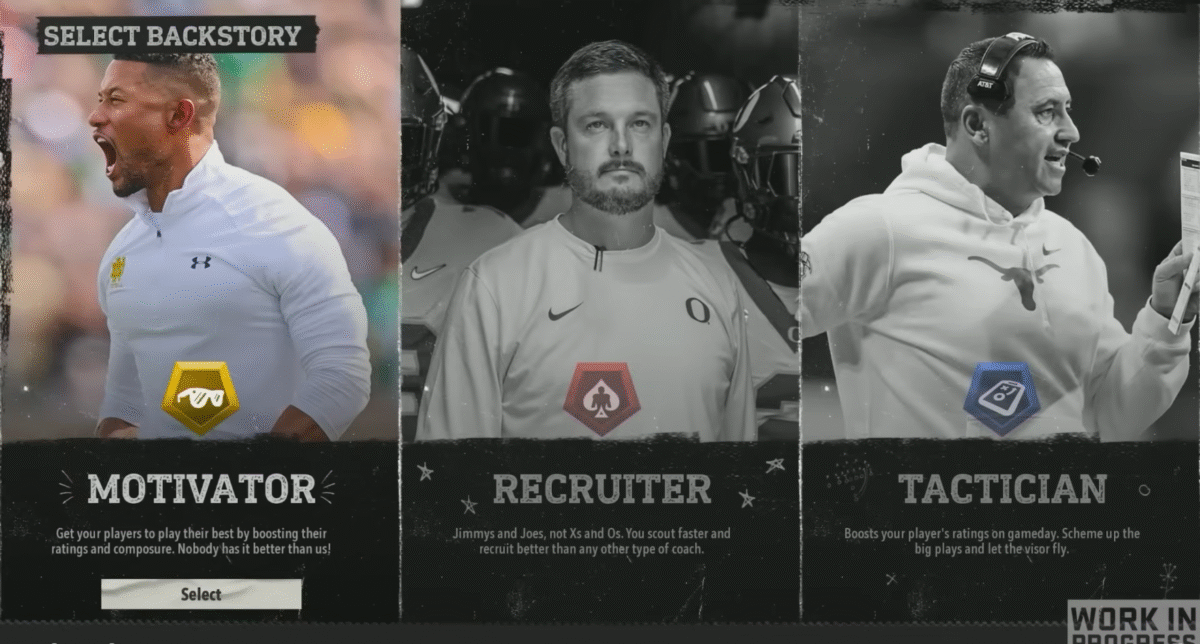
At the start of Dynasty Mode, players must choose a backstory for their coach. This choice directly influences how recruiting and development function throughout the season. Here are the different backstories that you can choose from:
- Motivator focuses on player development and school culture, helping improve in-season performance.
- Recruiter speeds up talent acquisition, making it easier to get commitments.
- Tactician boosts player ratings during games.
While Recruiter might seem like the obvious choice, especially for those wanting quick wins in recruiting, it’s often more effective to start with Motivator, particularly for smaller programs. This allows your team to improve more naturally, setting a solid foundation for better recruiting in future seasons.
Allocating Coaching Points
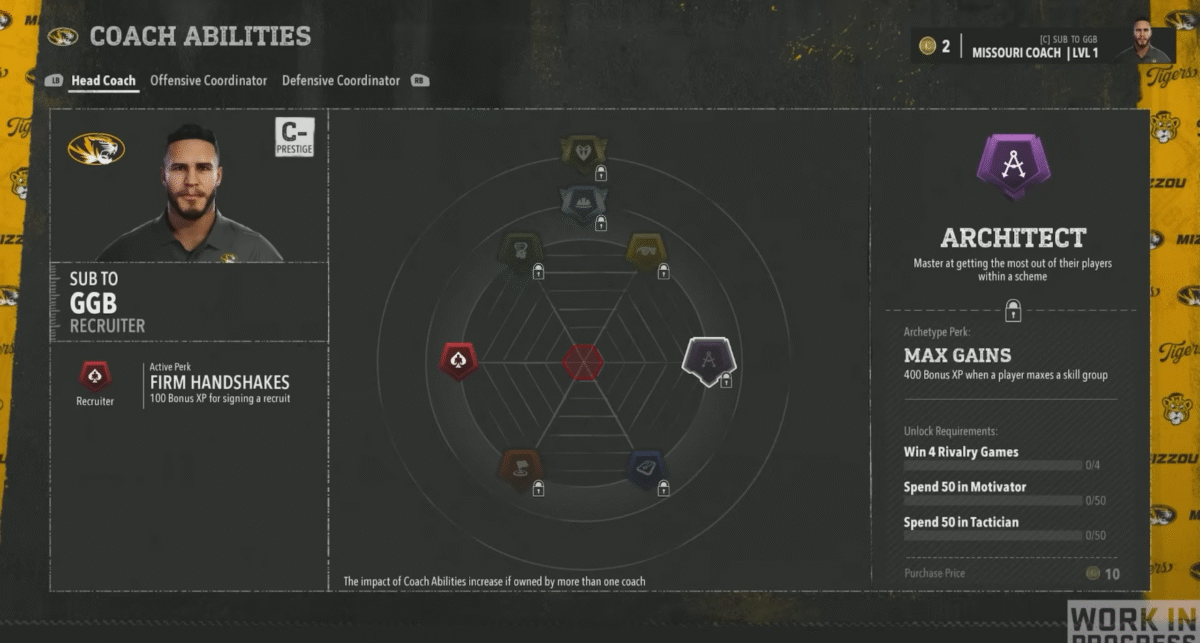
As your coach gains experience, you’ll be able to unlock and upgrade abilities. One of the smartest early investments is in quarterback recruiting.
A strong quarterback pipeline is essential, especially for smaller schools that may lose standout players to bigger programs via the transfer portal. Developing talent across all positions is important, but prioritizing quarterbacks provides the most long-term value
Also read: Best 12 Early Tips & Tricks For CFB 26
All features on the Recruiting Menu
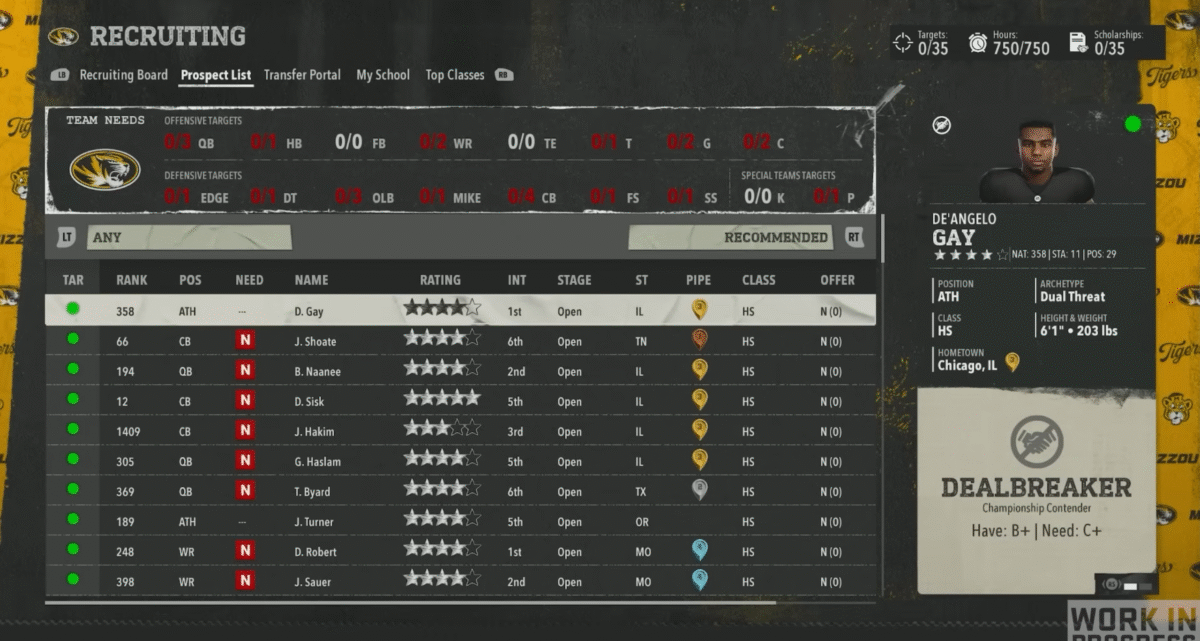
The recruiting menu includes five main tabs:
- Recruiting Board: Your shortlist of top targets.
- Prospect List: A complete database of all available high school prospects.
- Transfer Portal: Opens after the season for recruiting college players.
- My School: Overview of your recruiting progress and school metrics.
- Top Classes: National rankings of all schools’ recruiting success.
In the top corner of the screen, you’ll find three important tracking tools:
- Targets: You can pursue up to 35 prospects at once.
- Hours: Weekly recruiting hours vary depending on your coach’s efficiency.
- Scholarships: A maximum of 35 scholarships can be distributed per recruiting cycle.
Building an Efficient Recruiting Strategy
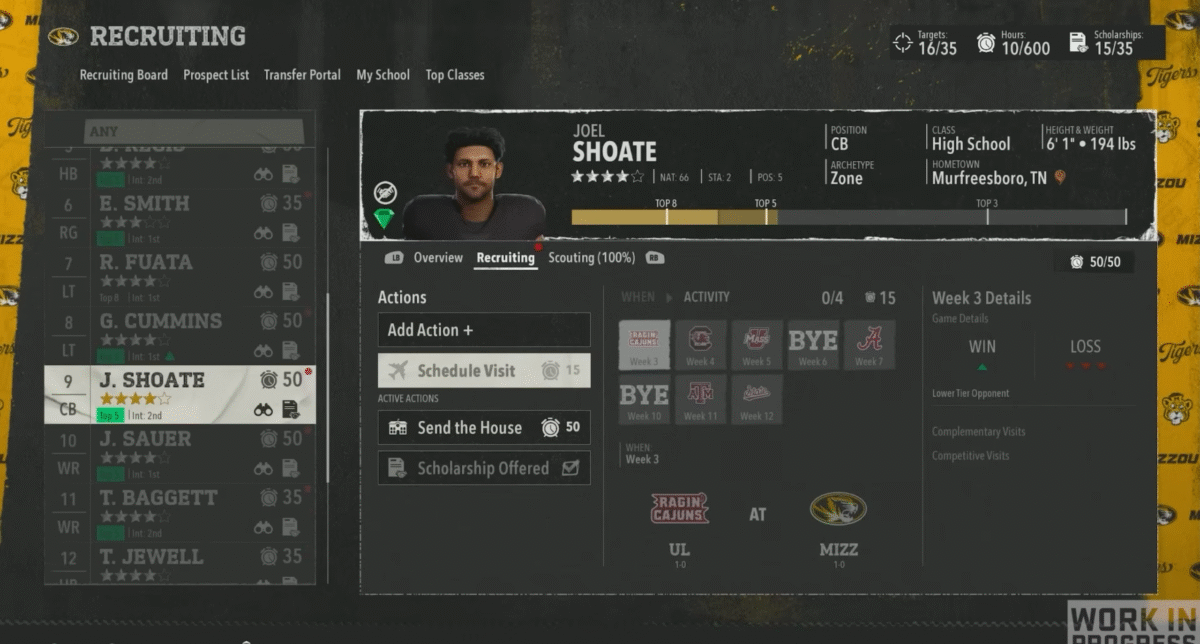
If you’re managing a smaller school, start by focusing on players from your region. Using the “My Pipelines” tab to find nearby talent is an efficient way to recruit based on proximity to home.
This is one of the most persuasive factors for high school players. Use the “Recommended” section to find early targets who are a good match for your school’s profile.
Don’t focus exclusively on five-star prospects. Large programs might snag them easily, but for everyone else, mixing in three- and four-star recruits is a smart move.
These players often develop into stars over time and are less likely to transfer out. In your first season, it’s better to target two- to four-star athletes and gradually shift toward elite recruits as your school gains prestige.
Once you’ve selected 35 targets, offer all of them scholarships right away. Doing this early keeps you in the race and may even result in early commitments. However, don’t expect quick results; successful recruiting takes consistent weekly effort.
Weekly Recruiting Activities
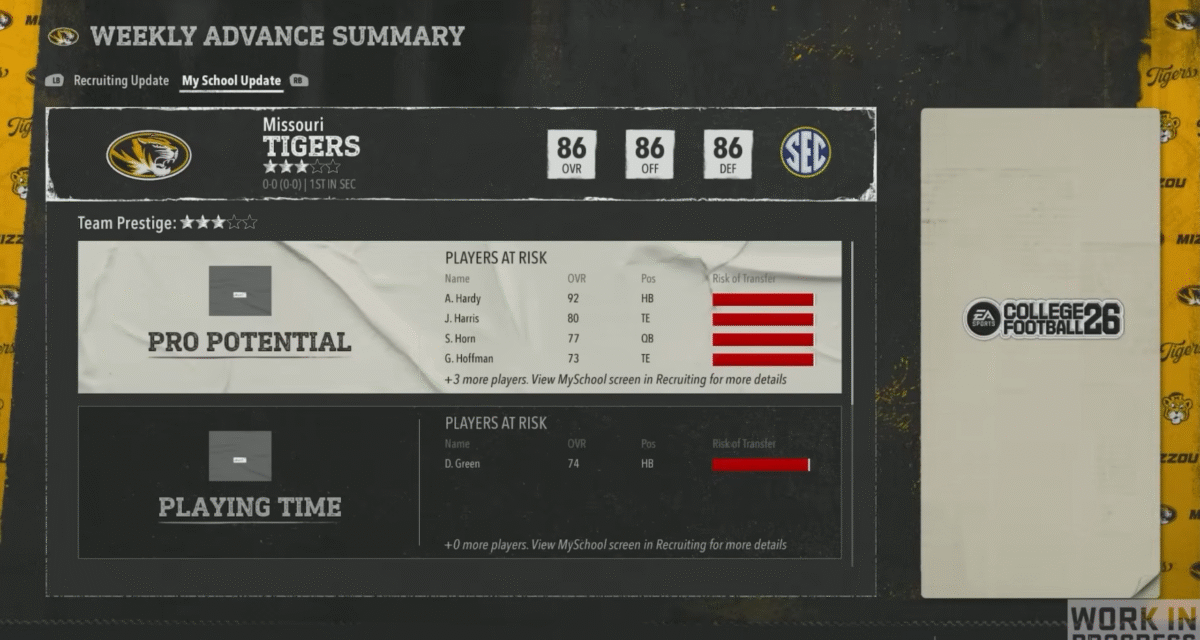
During the season, each week gives you a chance to engage with prospects using various actions, which require time investment. These include:
- Schedule Visit (before mid-season)
- Search Social Media
- DM Player
- Contact Family and Friends
- Send the House
- Sway, Soft Sell, Hard Sell (unlocked once you’re in a recruit’s top five)
When a player becomes a priority, “Send the House” is a powerful first move. Once you’re in their top five, “Hard Sell” becomes available. This feature is more effective when your school ranks high in several motivations, which are tied to key aspects like:
- Academic Prestige
- Athletic Facilities
- Coach Stability
- Program Tradition
- Pro Potential
- Proximity to Home
- Playing Time
- Brand Exposure
- Championship Contender
Each pitch groups these motivations, so the more A-rank traits your program has, the more persuasive your recruiting becomes.
Visits are another major turning point. Schedule recruits for marquee matchups, big games against ranked opponents, or rivals. Winning those games can dramatically increase your chances of securing a commitment. On the flip side, losing may cost you the recruit entirely.
Also read: Best Settings For CFB 26
Adapting Throughout the Season
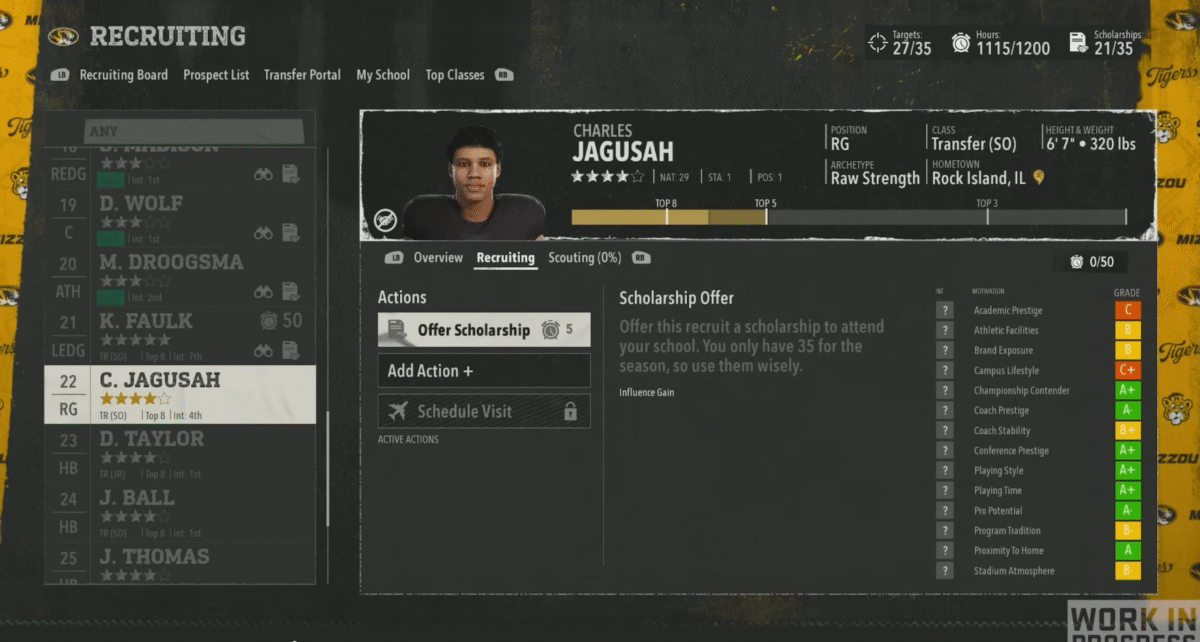
Monitoring each prospect’s interest is important. The interest gauge for each school updates weekly, so if you’re far behind a recruit’s top schools, it’s wise to cut your losses and reallocate hours to someone more attainable. Wasting time on unlikely recruits can cost you other potential stars.
Be on the lookout for overlooked talent as well. Some prospects go under the radar and receive little to no attention from other schools. Snagging one of these “sleeper” recruits can sometimes bring major upside with minimal competition.
Using the Transfer Portal
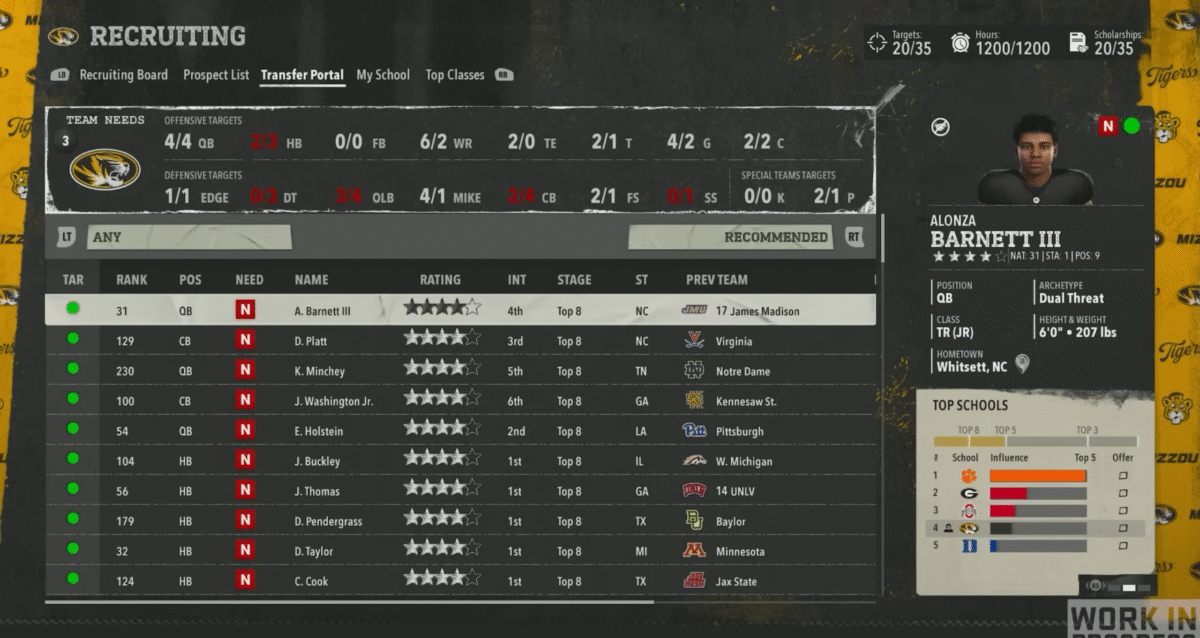
After the season ends, the transfer portal opens and works much like regular recruiting. You’ll offer scholarships and pitch your program to veteran players from other schools. These additions can fill immediate needs or strengthen weaker positions, especially for schools that struggled to land top freshmen.


